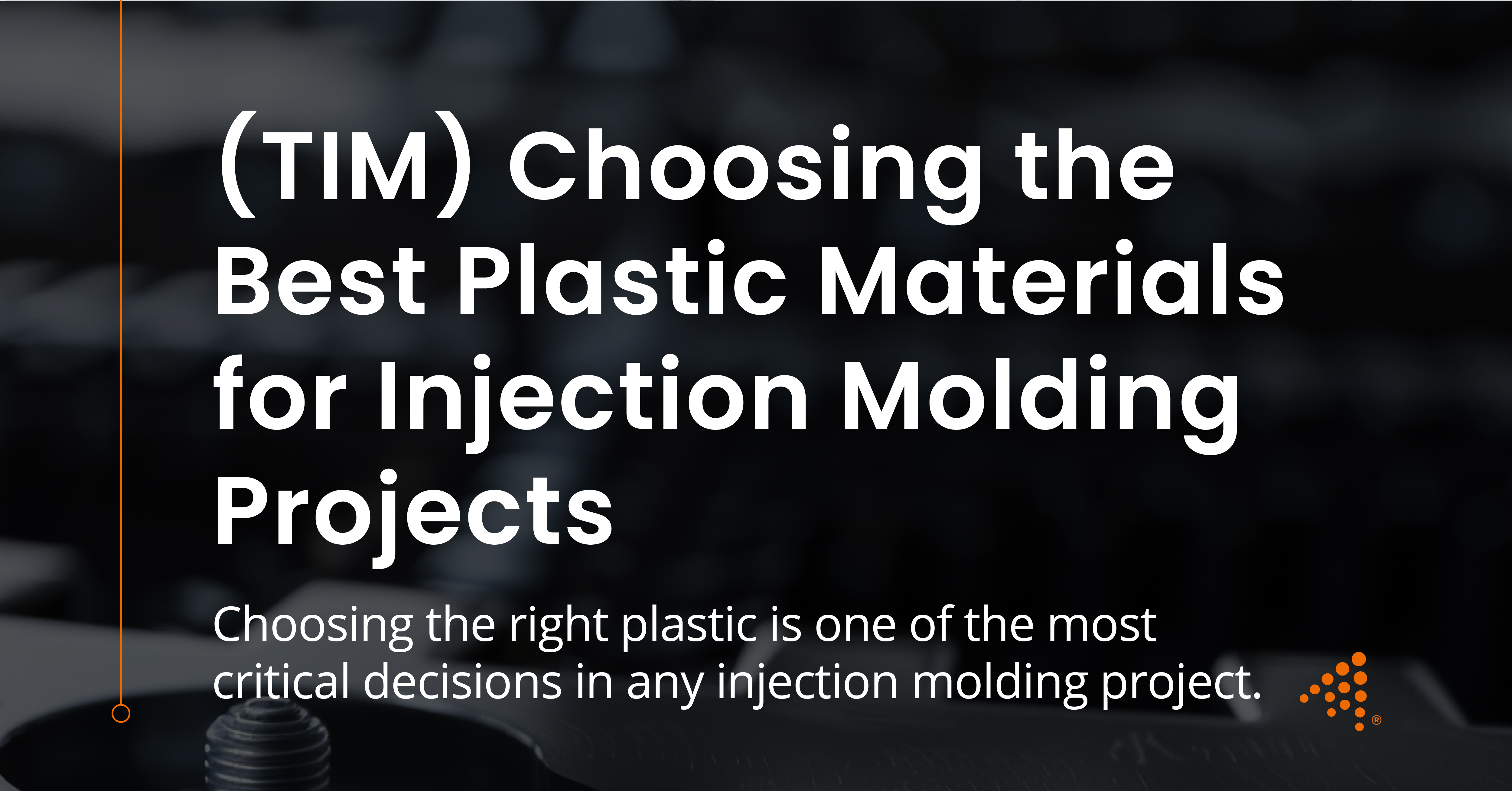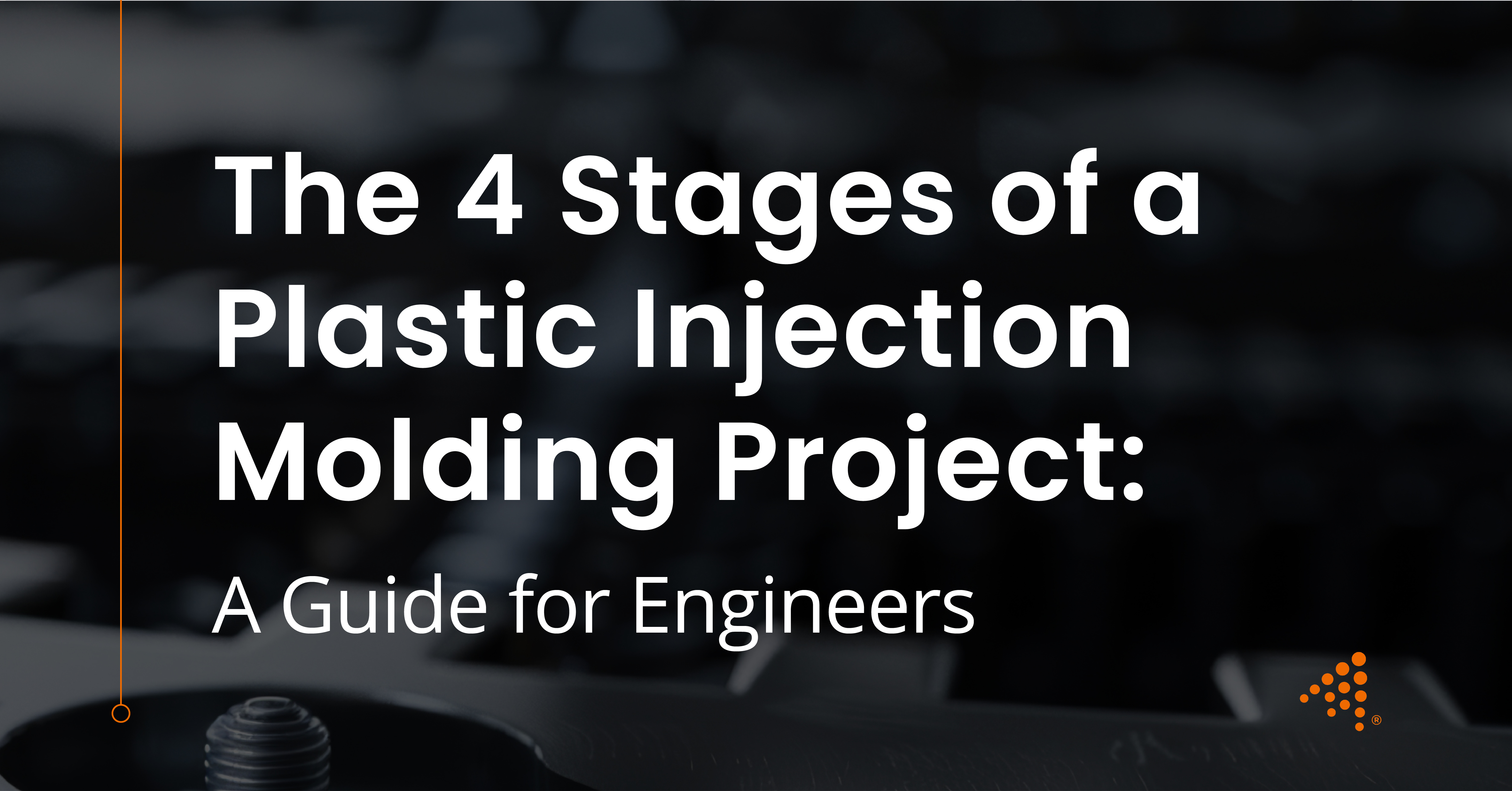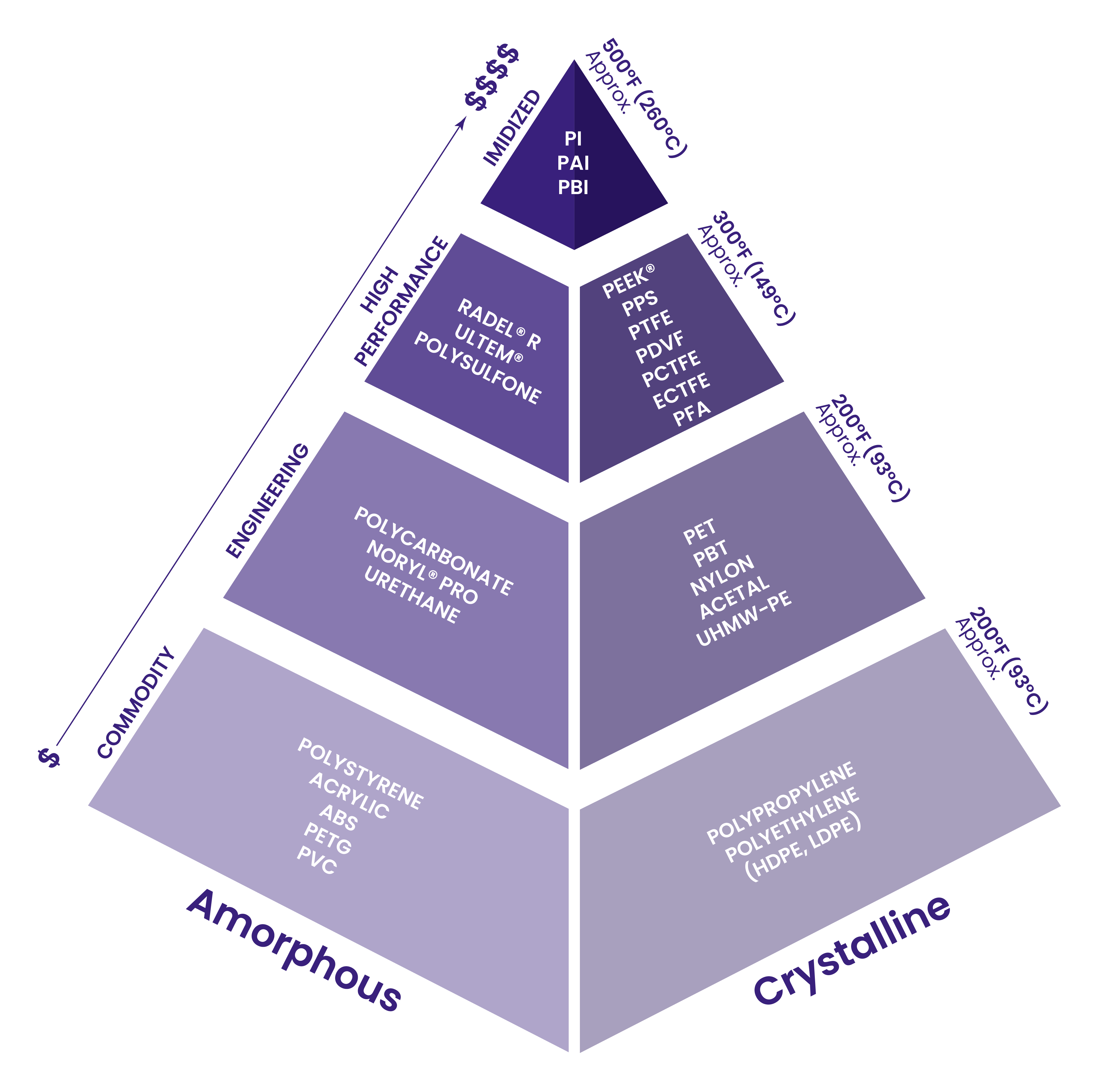The 4 Stages of a Plastic Injection Molding Project: A Guide for Engineers
Plastic injection molding is one of the most widely used manufacturing processes for producing plastic parts, valued for its efficiency, scalability,...

Choosing the right plastic is one of the most critical decisions in any injection molding project. This choice dictates a part's mechanical strength, chemical resistance, finish, and final cost. With hundreds of commodity and engineering plastics available, making an informed decision based on your project's specific application is fundamental to its success. This guide provides a detailed look at the most common thermoplastic materials, their unique properties, and the key factors to consider for optimal results. With expertise in Design for Injection Molding (DfIM) and access to ISO-Certified Manufacturing, Aprios is equipped to help you choose materials that balance quality, compliance, and manufacturability.
Read More About Injection Molding Defects: Voids – Causes & Fixes | Aprios
Each plastic possesses a unique profile of strengths and weaknesses. Understanding these nuances is key to matching a material to your part's intended function. The right choice supports plastic part design optimization, tooling solutions, and effective downstream processing, like secondary manufacturing processes.
Polypropylene is a versatile and cost-effective commodity plastic. As one of the most widely used materials, it offers a great balance of mechanical and chemical properties.
ABS is a popular engineering thermoplastic known for its toughness and aesthetic finish. It provides a good middle ground between standard plastics and high-performance engineering resins.
When exceptional toughness and transparency are required, Polycarbonate is a top choice. This incredibly durable engineering plastic can withstand significant impacts without fracturing.
Nylon (Polyamide) is a family of engineering plastics prized for its exceptional mechanical strength, wear resistance, and low-friction properties.
HDPE is a durable and highly versatile plastic known for its impressive chemical resistance and large strength-to-density ratio.
Often sold under brand names like Delrin®, POM is an engineering thermoplastic used for parts that require high stiffness, dimensional stability, and low friction.
Acrylic is a rigid thermoplastic valued for its superior optical clarity, weatherability, and scratch resistance, often used as a lightweight and shatter-resistant alternative to glass.
|
Material
|
Relative Cost
|
Tensile Strength
|
Flexibility
|
Temp. Resistance
|
Clarity
|
|
Polypropylene (PP)
|
Low
|
Medium
|
High
|
Medium
|
Translucent
|
|
ABS
|
Low-Medium
|
Medium
|
Medium
|
Medium
|
Opaque
|
|
HDPE
|
Low
|
Low
|
High
|
Low
|
Translucent/Opaque
|
|
Nylon (PA 66)
|
Medium
|
High
|
Medium
|
High
|
Opaque
|
|
Polycarbonate (PC)
|
High
|
High
|
Medium
|
High
|
Transparent
|
|
POM (Acetal)
|
Medium
|
High
|
Low
|
High
|
Opaque
|
|
PMMA (Acrylic)
|
Medium
|
Medium
|
Low
|
Medium
|
Transparent
|
Choosing the right material requires a careful analysis of your project's demands. Consider these factors:
Struggling to Choose the Right Plastic for Your Part?
From PP to PC, our material experts help you balance cost, durability, and compliance for every application.
The trade-offs between cost, strength, and processability can be complex. The team at Aprios has the expertise to guide you through the material selection process. We work with you to analyze your design and application, recommending the ideal plastic that delivers on performance and stays within budget. From initial prototype to full-scale production, we help get your project right from the start with design for manufacturing services, rapid prototyping services, and additive manufacturing for production.
Selecting the right plastic material is a foundational step for successful injection molding. By carefully considering the properties of each material against the demands of your application, you can produce a high-quality, durable, and cost-effective part. If you’re ready to discuss material options for your next project, contact the experts at Aprios today.
You can also view our Material Selection tool.

Plastic injection molding is one of the most widely used manufacturing processes for producing plastic parts, valued for its efficiency, scalability,...

Lead times are a significant consideration in any manufacturing endeavor, and a thorough understanding of the timelines associated with different...

Choosing the Right Material for Injection Molding: A Comprehensive Guide Material selection is a critical aspect of injection molding, influencing...